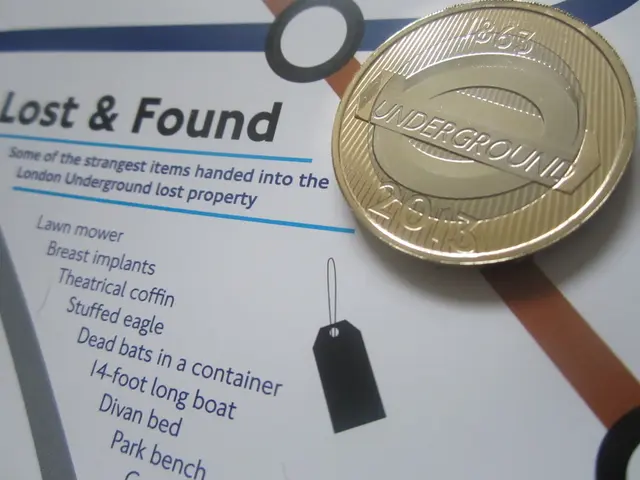Busting Your Budget on Broken Parts? EU Consumers Might See Change
Ever faced a hefty bill for a replacement part for a faulty product? Well, EU consumers might experience a shift. Representatives from EU Member States have proposed a strategy to exempt consumers from specific design protection, potentially decreasing the cost of spare parts by up to 544 million euros over a decade.
This regulation targets certain items, like vehicles, where spare parts can be developed for repair purposes and must resemble the original part. Examples include damaged car doors or broken lights. This initiative is part of a larger package intended to strengthen intellectual property protection against counterfeiting, introduced by the EU Commission in November 2022.
The Future of Auto Repair
Car repair will undergo a transformation under this new regulation. Manufacturers will be required to make substitute parts reasonably priced. Failure to do so will result in third-party providers stepping in to offer bargain alternatives. Repairability ratings will also be given to products to help consumers make intelligent repair decisions, ensuring fair pricing for repairs.
Warranty Matters
Warranties are integral to this new strategy. If a client opts for repairing a defective item, the warranty will extend automatically by a year. This initiative supports repairs over replacements, aligning with the directive's sustainability goals.
Non-Manufacturer Parts
In the case of vehicle repairs, insurance firms might utilize non-manufacturer parts that mirror the original parts' quality standards. The cost of these parts will be regulated by the manufacturer’s latest list price.
Transparency in Pricing
Transparency is vital in this new plan. Consumers will have easy access to detailed and intelligible information on spare part prices, ensuring fairness and clarity in pricing.
A Green Tomorrow
The EU Right to Repair Directive aims to foster repairability and reduce electronic waste by mandating manufacturers to provide technical documentation, repair manuals, and reasonably priced spare parts. This directive represents a significant stride towards a more sustainable future.
In essence, the EU's plan to exclude consumers from certain design protection for spare parts might save up to 544 million euros over a decade. This change is an important aspect of a wider plan intended to strengthen intellectual property protection against counterfeiting and promote sustainability.
Source:
Additional Insights
The EU Right to Repair Directive, officially known as Directive (EU) 2024/1799, is a legislative measure aimed at encouraging repair of consumer goods and decreasing electronic waste (e-waste) in the European Union. The directive became effective on July 30, 2024, and its main provisions include:
- Obligation to Repair: Manufacturers must offer repairs for faults occurring following the statutory warranty period, unless repair is impossible. This applies to products placed on the market before July 2026, contingent on other product-specific EU regulations.[1]
- Warranty Limitations: Manufacturers cannot use contractual provisions, hardware, or software to obstruct repairs unless justified by legitimate and objective reasons.[1]
- Extended Warranty: Consumers who opt for repairing their products receive an extra year of the statutory warranty.[1]
- Spare Parts Accessibility: Manufacturers must ensure spare parts are available for consumers and independent repairers for up to 10 years after a product’s launch.[1]
- Repairability Scores: Products must display ‘repairability’ ratings to help consumers make informed decisions.[1]
- Technical Documentation: Repair manuals and technical information must be provided to consumers and independent repairers.[1]
- Affordable Repairs: Spare parts and repair services must be affordable to encourage repairs over replacements.[1][3]
Promoting Affordable Repairs and Sustainability
- Affordable Repairs: The directive seeks to decrease financial strain on consumers by mandating affordable repairs and replacements, thereby encouraging repairs over replacements, therefore reducing waste and promoting sustainability.[1][3]
- Extended Warranty: Extending warranty periods by one year encourages repair and reuse, decreasing the need for new products and resources.[1]
- Enhanced Repairability: By requiring manufacturers to supply technical documentation and ensuring spare parts availability, the directive improves product repairability, making repairs more accessible and affordable to consumers, reducing electronic waste, and supporting a circular economy.[1][3]
- Informed Consumer Decisions: The inclusion of repairability scores and transparent information regarding repair options helps consumers make more sustainable choices, preferring products that are easier to repair and maintain.[1]
In summary, the EU Right to Repair Directive aims to shift the focus from replacing consumer products to repairing them, thereby reducing e-waste, promoting sustainability, and empowering consumers with more affordable and accessible repair options.





